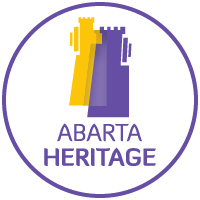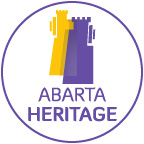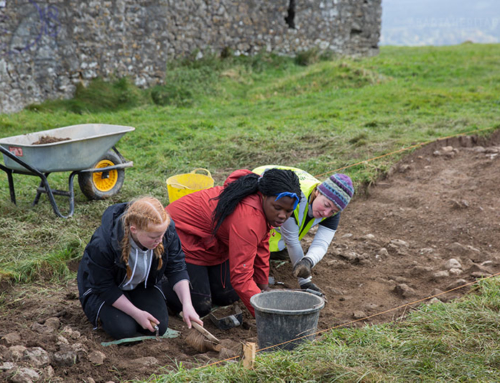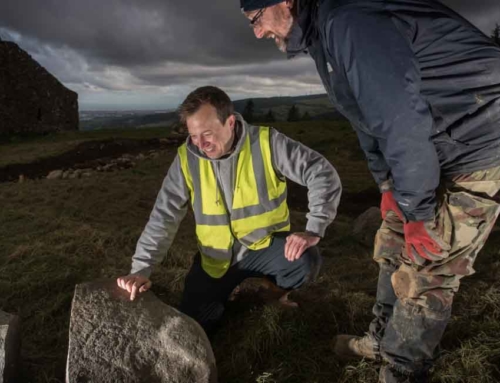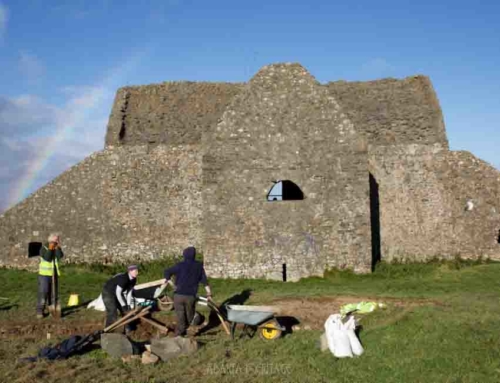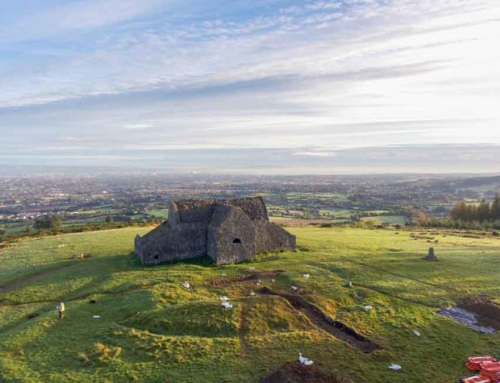Hellfire Club Archaeological Project Diary Week One
Welcome to our site diary; read on to discover the latest findings from the Hellfire Club Archaeological Project Week One (Tuesday 04th October – Friday 07th October 2016).
We are carrying out a small dig on what is believed to be a large 5,000 year old passage tomb that was largely destroyed when William Conolly had the Hellfire Club built originally as a Hunting Lodge in around 1725. For more about the Hellfire Club – click here. With the excavation we hope to establish just how much of the tomb survives, and if possible, to retrieve some bone or charcoal from a prehistoric context so we can radiocarbon date the site to find out exactly how old it is, and to help compare it with other passage tombs like Newgrange, Knowth or other passage tomb cemeteries like Carrowkeel in County Sligo.
Since we started digging on Tuesday (4th October), we have opened a 15 metre by 2 metre trench across the tomb to look at the preservation and to get a sense of the type of soils and contexts. We are excavating everything by hand, using spades, shovels, mattocks and trowels, so it can be a slow and painstaking job. In the uppermost layers, as you can imagine, we found lots of evidence of people picnicking and partying through the years, but amongst the beer cans and plastic rubbish we also found some nicer finds, like a clay tobacco pipe from around the 1850s that has a bird’s claw (or perhaps a dragon’s claw if you’re a Game of Thrones fan). You can still see the maker’s mark on the stem so hopefully we might be able to discover what factory made the pipe and when.
As we progressed with the dig, we discovered that the large mound that you see so clearly in the aerial photographs, is actually man made. It looks to have been constructed of layers of large stones and earth. We’re still at an early stage with this feature, so we hope to have a better understanding by next week. That stony layer that you see near the end of the trench appears to be the stony covering of the cairn that has slipped down the mound. It’s quite a mixed context, with some more modern finds within it, so it may partly be the result of the disturbance of the tomb.
We also found waste fragments from the manufacture of stone tools, consistent with what you might expect from site that dates to the Neolithic period, the time of Ireland’s first farmers who lived over 5,000 years ago. This was a pre-metal age, so the main tools would have been made from organic materials like wood, bone, sinew and leather and stone like flint or chert. The organic material often does not survive such a gulf in time, so we are often only left with the stone tools, or occasionally, fragments of pottery.
The weather has been extremely kind to us, as has the large number of locals who have stopped by for a chat and to see what we’re doing. A number of the local schools have also paid us a visit, like Rockbrook Park and Ballyroan Boys’ National School and we’re looking forward to helping Tallaght Community School in their project to uncover the stories and folklore about the Hellfire Club.
The Hellfire Archaeological Project is carried out by Abarta Heritage and volunteers from UCD School of Archaeology with funding by South Dublin County Council and support from Coillte and the Dublin Mountains Partnership.
Please do come up and visit the dig to discover our latest findings, we’re on site from Monday – Friday from 9am – 4pm. You can also keep up with us here on our website.
